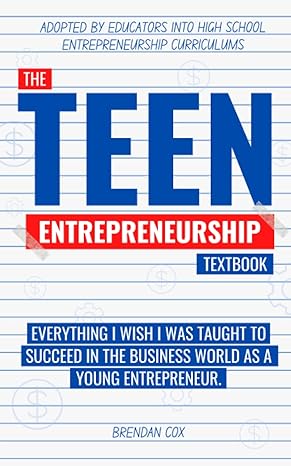Question
Learning Outcomes: Understand the questions you must ask and answer, and the steps you should take, in developing an e-commerce presence. Identify and understand the
Learning Outcomes:
Understand the questions you must ask and answer, and the steps you should take, in developing an e-commerce presence.
Identify and understand the major considerations involved in choosing web server and e-commerce merchant server software.
Understand the issues involved in choosing the most appropriate hardware for an e-commerce site.
Identify additional tools that can improve website performance.
Readings
Chapter 3: Building an E-commerce Presence
Recommended
3 Proven Tips To Boost Your E-Commerce Growth https://www.forbes.com/sites/jiawertz/2019/03/08/3-proven-tips-to-boost-your-e-commerce-growth/?sh=779351872cb1
Video Case Study
Building a Mobile App:
https://www.youtube.com/watch?v=fq4N0hgOWzU;
L: 1:52
https://www.youtube.com/watch?v=kfd-oLypqFI;
L: 2:36
Think & Discuss
In December 2018, Google announced that Flutter version 1.0, its open source framework/toolkit for developing mobile apps for both iOS and Android devices, was now officially available. During the time that Flutter was in beta development, a number of companies, including Alibaba, Groupon, Tencent, and others, used it, as well as the developers of the Hamilton app, as discussed in the second video. Flutter is based on Dart, Googles in-house programming language and also uses a number of other Google technologies and ideas, including Google Material Design, its design language, and a rendering engine based on the Skia Graphics Library, used by Chrome. Google believes that Flutter will help developers overcome the traditional limitations of cross-platform approaches by enabling a code once environment. By using Googles Material Design and an extensive
widget catalog, Flutter enables developers to easily create user interfaces that match the design and brand experience desired for the mobile app. There are a number of other cross-platform development environments available for mobile apps, including Microsofts Xamarin, Facebooks React Native, Corona SKD, JQuery Mobile, and Iconic, among others.
Video Case Questions:
How is Flutter able to be used to create native applications for both iOS and Android devices?
What does stateful "hot reload" functionality allow?
Why did Hamilton's producers create a mobile app?
How long did it take to develop the Hamilton app
What is some of the functionality offered by the app?
What were some of the advantages to using Flutter?
Test your knowledge
Q1: In the systems ______________ of the SDLC, you try to answer the question, What do we want this e-commerce site to do for our business?
Design step
Analysis/planning step
Testing step
Implementation step
Q2: A good e-commerce website design should avoid:
A: Annoying graphics or sounds that you cannot turn off
B: Pages that work, load quickly, and point the customer toward your product offerings
D: One or two clicks to purchase
C: Multi-browser functionality
Q3: ________________ verify that links on pages are still valid and identify orphan files, or files on the site that are not linked to any pages.
A: Dynamic Page Generation Tools
B: Web Content Management Tools
C: Merchant Server Tools
D: Site Management Tools
References
Laudon, K., & Traver, C. (2018). E-commerce: Business, technology, society. 2018. (14th). Upper Saddle River, NJ: Pearson Prentice Hall. ISBN: 978-1-292-25170-7
Step by Step Solution
There are 3 Steps involved in it
Step: 1

Get Instant Access to Expert-Tailored Solutions
See step-by-step solutions with expert insights and AI powered tools for academic success
Step: 2

Step: 3

Ace Your Homework with AI
Get the answers you need in no time with our AI-driven, step-by-step assistance
Get Started


